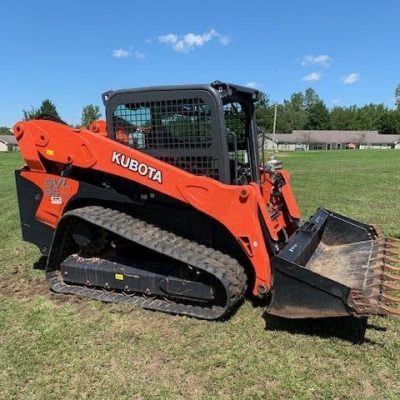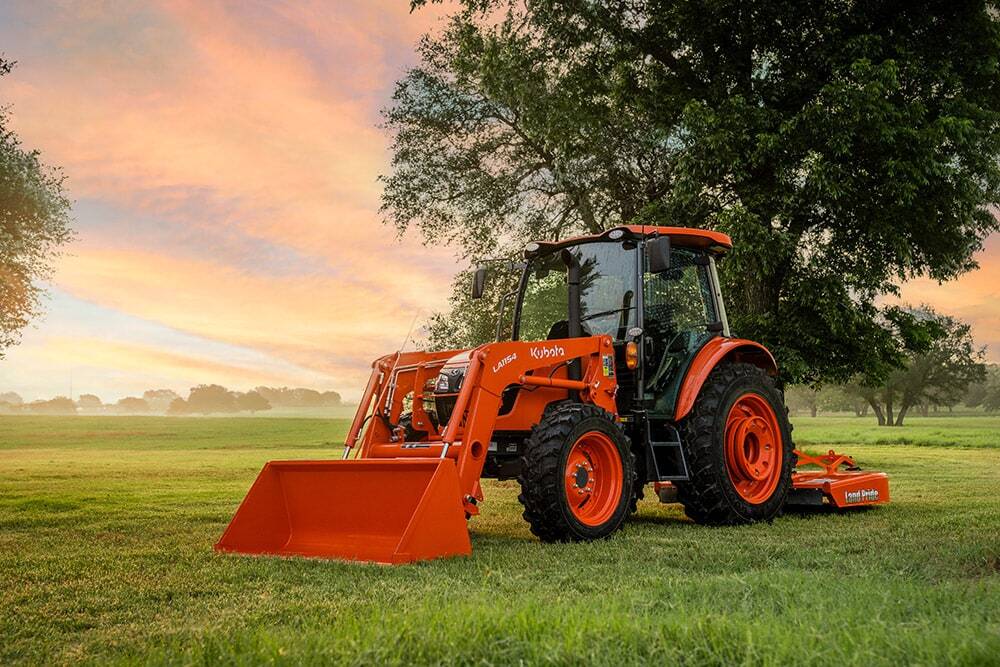Operating a Bobcat skid steer can transform your construction, landscaping, or agricultural project from a week-long ordeal into a manageable task. These compact, versatile machines excel at digging, lifting, pushing, and carrying materials in tight spaces where larger equipment won’t fit.
But here’s the reality: improper operation can lead to costly accidents, equipment damage, and project delays. Whether you’re a contractor looking to expand your equipment skills or a property owner considering renting a skid steer for your next project, mastering the fundamentals is non-negotiable.
This comprehensive guide will walk you through everything you need to know—from essential safety protocols to advanced operating techniques that separate novice operators from seasoned professionals.
Safety First: Non-Negotiable Guidelines
Before you even think about starting the engine, understand this: Skid steers are powerful machines that demand respect. The Occupational Safety and Health Administration (OSHA) requires operators to receive proper training, and for good reason.
Personal Protective Equipment (PPE)
Your safety gear isn’t optional—it’s your first line of defense. Always wear:
- Hard hat: Protects against falling debris and overhead hazards
- Safety glasses or goggles: Shield your eyes from dust and flying particles
- Steel-toed boots: Provide foot protection and better pedal control
- High-visibility clothing: Ensures you’re visible to other workers on site
- Hearing protection: Reduces noise exposure during extended operation
Operator Restraint Systems
Modern Bobcat skid steers come equipped with operator restraint systems—use them. These systems prevent you from being thrown from the cab during tip-overs or sudden stops. The restraint bar should be lowered and locked in position before operating the machine.
Site Awareness
Survey your work area before beginning operations. Look for:
- Overhead power lines or low-hanging branches
- Unstable ground conditions or hidden obstacles
- Other workers or equipment in the vicinity
- Slopes that exceed the machine’s operating limits
Pre-Operation Checklist: Your Daily Insurance Policy 
A thorough pre-operation inspection takes just minutes but can prevent hours of downtime and costly repairs. Make this checklist your daily ritual:
Visual Inspection
Walk around the machine and examine:
- Tires or tracks: Check for cuts, excessive wear, or proper inflation
- Hydraulic hoses: Look for leaks, cracks, or loose connections
- Attachment points: Ensure pins and latches are secure
- Cab structure: Verify that the rollover protective structure (ROPS) is intact
Fluid Levels
Check these essential fluids:
- Engine oil: Should be between the minimum and maximum marks
- Hydraulic fluid: Low levels can cause system failure
- Coolant: Prevents engine overheating
- Fuel: Plan for adequate fuel throughout your work session
Operational Systems
Test these components before beginning work:
- Engine start and idle: Listen for unusual noises
- Hydraulic controls: Verify smooth operation of lift arms and tilt functions
- Brakes: Test the parking brake engagement
- Warning lights: Address any illuminated indicators
Basic Controls: Your Command Center
Understanding your Bobcat’s control system is fundamental to safe, efficient operation. Most modern skid steers use either hand controls or foot pedals—both systems have their advantages.
Hand Control Systems
Hand controls offer precise operation and reduced operator fatigue. The typical setup includes:
Left joystick: Controls the left drive motor and lift arm functions
Right joystick: Controls the right drive motor and tilt functions
Auxiliary buttons: Operate attachment-specific functions
Foot Pedal Systems
Traditional foot pedal systems provide:
Left pedal: Controls the left track or wheel
Right pedal: Controls the right track or wheel
Hand controls: Manage lift and tilt functions
Essential Control Functions
Master these fundamental movements:
- Forward/reverse: Push both joysticks or pedals in the same direction
- Turning: Move controls in opposite directions for zero-radius turns
- Lift: Raises the attachment and lift arms
- Tilt: Angles the attachment up or down
Operating Techniques: Maximizing Efficiency and Safety 
Efficient skid steer operation combines proper technique with situational awareness. These proven strategies will improve your productivity while minimizing wear on the machine.
Load Handling Best Practices
Always maintain proper load distribution:
- Keep loads low: Transport materials with the attachment close to the ground
- Travel backwards uphill: When carrying heavy loads on slopes
- Use counterweights: When specified by the manufacturer
- Respect load limits: Never exceed the machine’s rated operating capacity
Maneuvering Techniques
Take advantage of the skid steer’s unique mobility:
- Plan your route: Minimize tight turns when carrying loads
- Use gradual movements: Sudden direction changes can cause instability
- Maintain traction: Avoid spinning tires or tracks on loose surfaces
- Exit the cab safely: Always lower the attachment, engage the parking brake, and turn off the engine
Attachment Management
Different attachments require specific operating techniques:
- Buckets: Keep cutting edges sharp and replace worn teeth promptly
- Augers: Start drilling at low RPM, then increase speed gradually
- Trenchers: Maintain steady forward speed for consistent cut quality
- Brush cutters: Work at an appropriate ground speed for cutting conditions
Maintenance: Protecting Your Investment
Regular maintenance prevents costly breakdowns and extends equipment life. Follow these essential maintenance practices:
Daily Maintenance Tasks
Start each day with these quick checks:
- Clean air filter: Remove debris and dust accumulation
- Grease fittings: Lubricate according to the manufacturer’s specifications
- Check tracks/tires: Inspect for damage or excessive wear
- Clean cooling system: Remove debris from radiator and oil cooler
Weekly Maintenance Requirements
Schedule these tasks weekly:
- Change engine oil: Follow manufacturer intervals religiously
- Service hydraulic filter: Replace when pressure indicators show restriction
- Inspect drive chains: Adjust tension and lubricate as needed
- Test safety systems: Verify that all warning lights and alarms function properly
Seasonal Maintenance Considerations
Adjust your maintenance routine based on operating conditions:
- Winter preparation: Use appropriate fluid viscosities and block heaters
- Summer operations: Monitor cooling system performance closely
- Dusty conditions: Increase air filter service frequency
- Wet environments: Pay extra attention to electrical connections
Troubleshooting: Common Issues and Solutions
Even well-maintained machines experience occasional problems. Recognize these common issues and their solutions:
Engine Problems
Symptom: The engine won’t start
Possible causes: Dead battery, clogged fuel filter, or faulty starter
Solution: Check battery connections, replace fuel filter, or test starter system
Symptom: Engine overheating
Possible causes: Clogged radiator, low coolant, or faulty thermostat
Solution: Clean the cooling system, check coolant levels, or replace the thermostat
Hydraulic System Issues
Symptom: Sluggish hydraulic response
Possible causes: Low hydraulic fluid, contaminated fluid, or worn pump
Solution: Check fluid levels, replace contaminated fluid, or service the pump
Symptom: Hydraulic system overheating
Possible causes: Restricted cooler, excessive load, or internal leakage
Solution: Clean the hydraulic cooler, reduce the operating load, or repair leaks
Drive System Problems
Symptom: The Machine won’t move
Possible causes: Hydraulic drive failure, broken drive chain, or control malfunction
Solution: Check the hydraulic system, inspect the drive components, or test the controls
Mastering Your Bobcat Operation
Operating a Bobcat skid steer effectively requires combining technical knowledge with practical experience. The fundamentals covered in this guide—safety protocols, pre-operation inspections, control mastery, and maintenance practices—form the foundation of professional operation.
Remember: no article can replace hands-on training with a qualified instructor. Consider enrolling in a certified operator training program to complement the knowledge you’ve gained here. Many manufacturers and training organizations offer comprehensive courses that include both classroom instruction and practical operating experience.
Ready to take your equipment operation to the next level? Start by implementing these essential practices on your next project. Your safety, productivity, and bottom line depend on it.






